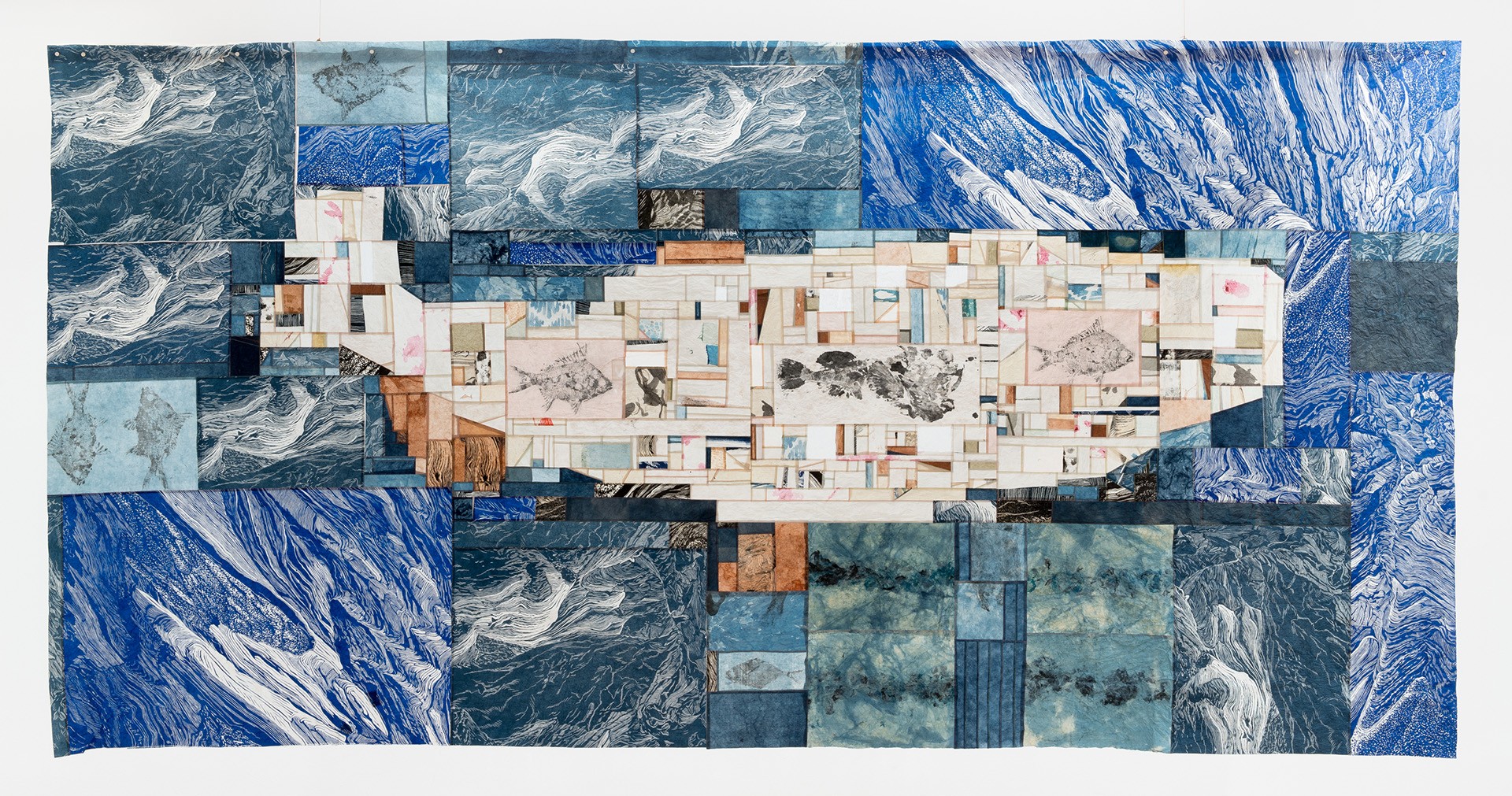Alexa Kumiko Hatanaka
Namazu,
2023
 washi patchwork (scraps collected over three years), printmaking, natural dye, ink, paper rice bags, approx. 70”x128”. Photo credit: Patel Brown Gallery
washi patchwork (scraps collected over three years), printmaking, natural dye, ink, paper rice bags, approx. 70”x128”. Photo credit: Patel Brown Gallery
Projection description
Namazu, the giant catfish that causes earthquakes with thrashes of its tail, has been depicted in popular Japanese artworks since the 1400s. The story originated from a fisherman that observed the activity of catfish, imagining the fish could predict earthquakes. I often allude to fisherpeople in my work, and broadly humans’ ability to be intimately in tune with their specific environments over time, a knowledge which we are losing.
My recent work explores the generational impacts of actual earthquakes, aftermaths, and relocations, also imagining their increased frequency into the future. In parallel, I am thinking metaphorically about earthquakes, tsunamis and aftershocks, as they relate to responses to personal events. I connect environmental, ancestral, and internal experiences, thinking about the impacts on one's somatic experience of grief alongside movement toward claiming new realities. I am interested in the tension between the human will to try and mitigate disaster, (including personal events) and the Japanese expression shikataganai, meaning that we cannot control negative events but only our response to them, an acceptance of instability.
I handcarved and handprinted lino blocks to create the blue imagery around the perimetre of the work. These depict wind-chiseled sea ice in the arctic, but naturally appear to look like water. I am always thinking about human and other life forms' connections across bodies of water, as well as the impacts of climate change, especially on communities still embedded in their particular lands. I use traditional paper and papermaking techniques from East and Southeast Asia; this knowledge has been passed down for over 1,000 years and relies on reciprocal relationships with land and water.
About the Artist
Alexa Kumiko Hatanaka is a Japanese-Canadian artist based in Toronto. Hatanaka’s practice draws from her training in print and papermaking techniques, connecting to her affinity for historical land-based materials and processes. Her adaptations of traditional forms address contemporary questions of climate change, mental health, and survival. Recurring motifs related to landscape, fish, and bodies of water together form an eloquent language for speaking about personal and collective experiences of struggle and resilience.
Hatanaka’s practice is informed by her experience-based research and collaboration, including long term projects in the high Arctic and performances that integrate and reinterpret kamiko, garments sewn out of washi, Japanese paper.
Hatanaka has exhibited her work at the National Gallery of Canada (Ottawa, CA), Art Gallery of Ontario (Toronto, CA), The British Museum (London, UK), Toronto Biennial of Art (Toronto, CA) the Guanlan International Printmaking Base (Shenzhen, China), Nikkei National Museum (Burnaby, CA), Ino Cho Paper Museum (Kochi, Japan), and Harper’s (New York, USA)

